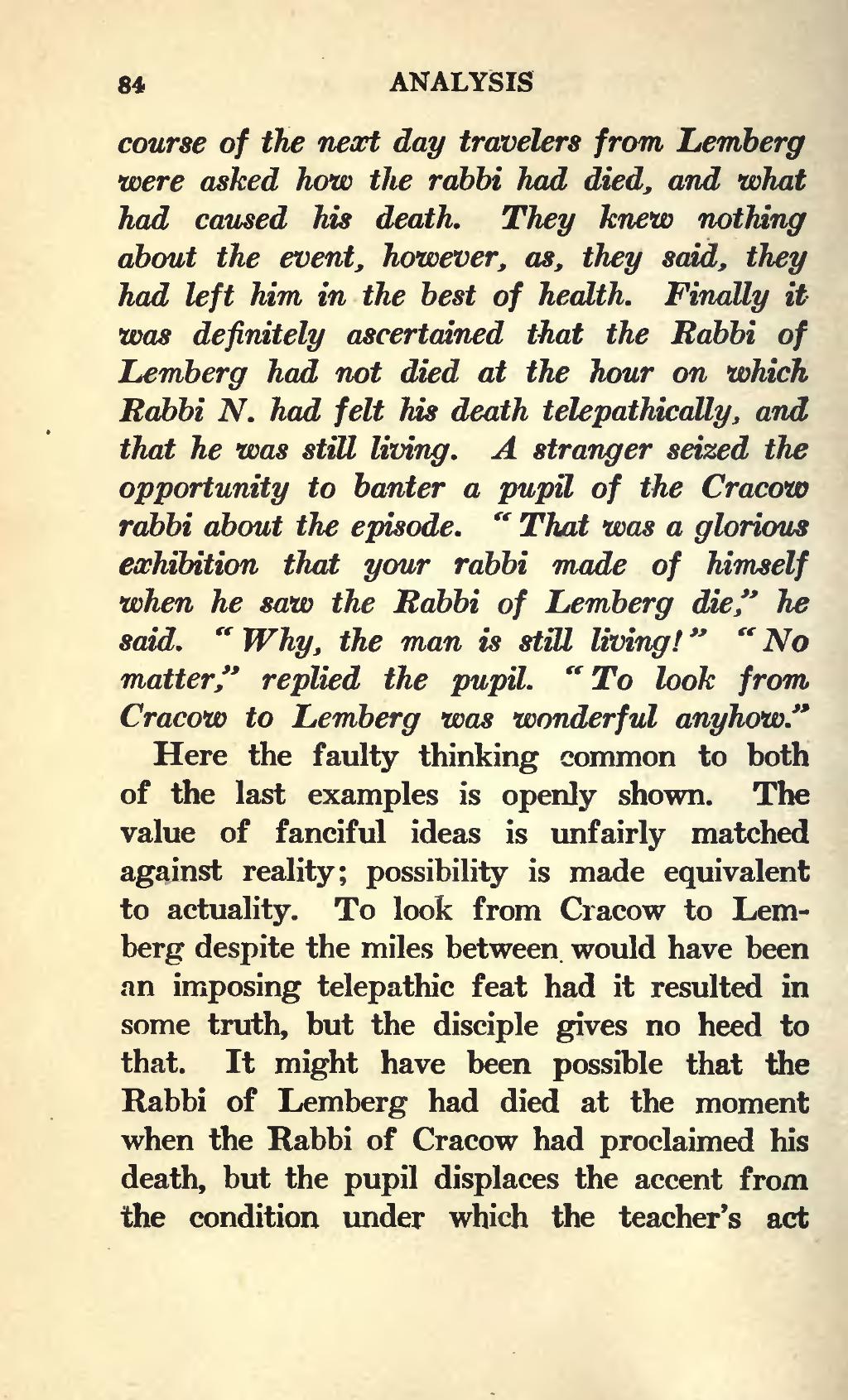of the next day travelers from Lemberg were asked how the rabbi had died, and what had caused his death. They knew nothing about the event, however, as, they said, they had left him in the best of health. Finally it was definitely ascertained that the Rabbi of Lemberg had not died at the hour on which Rabbi N. had felt his death telepathically, and that he was still living. A stranger seized the opportunity to banter a pupil of the Cracow rabbi about the episode. “That was a glorious exhibition that your rabbi made of himself when he saw the Rabbi of Lemberg die,” he said. “Why, the man is still living!” “No matter,” replied the pupil. “To look from Cracow to Lemberg was wonderful anyhow.”
Here the faulty thinking common to both of the last examples is openly shown. The value of fanciful ideas is unfairly matched against reality; possibility is made equivalent to actuality. To look from Cracow to Lemberg despite the miles between would have been an imposing telepathic feat had it resulted in some truth, but the disciple gives no heed to that. It might have been possible that the Rabbi of Lemberg had died at the moment when the Rabbi of Cracow had proclaimed his death, but the pupil displaces the accent from the condition under which the teacher’s act would
